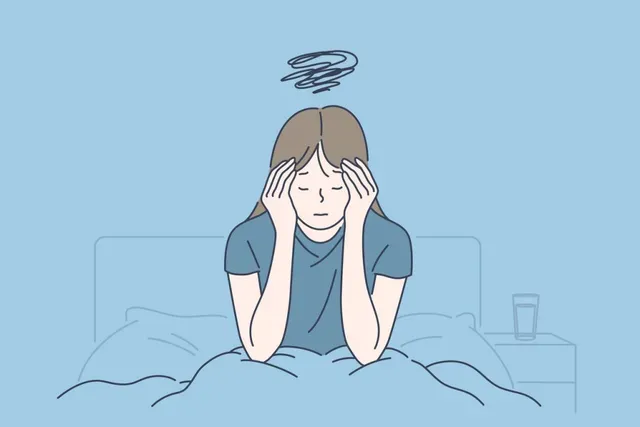Headaches effect nearly everybody in the world at one point or another. According to the World Health Organization (WHO), 1 in every 20 adults has a headache nearly every day. There are different types of headaches, divided into primary or secondary headaches. Primary type headaches include migraines, tension type headaches, and cluster headaches (which are very rare). Secondary headaches are caused by an underlying condition, such as compromised blood flow in the vertebral arteries, infections, meningitis, traumatic headaches, substances (hangovers), cervical spine issues (cervicogenic headaches), and others. For the purposes of this article, we will be focusing on migraines, tension type headaches, and cervicogenic headaches.
Your healthcare provider will be sure to determine the leading cause of your headaches. This should include ruling out red flags to ensure the safety of the patient. In order to determine the cause of your headaches, your healthcare provider will ask a detailed history of your headache symptoms, ask about any imaging you’ve had done in the past, perform special tests, etc. In the presence of any red flags, you will be referred to the appropriate healthcare specialist.
Migraines effect about 12% of the general population, nearly 1 billion people worldwide (9). Some individuals report a feeling that a migraine is about to arise, referred to as an aura. The pain is typically described as pulsating and throbbing, which may be associated with nausea and vomiting, and sensitivity to noise and light. Physical activity often increases the severity of a migraine. Physicians may give medications for treatment of migraines, but other treatments are also available. Manual physical therapy has been shown to improve intensity and frequency of migraine type headaches. One study shows that manual therapy techniques, such as manipulation, can be as effective as some pharmaceuticals for the preventative management of migraines (3). Another study reported that physical therapy is most successful in treating migraines when combined with other treatments such as biofeedback, relaxation training, and exercise (2). Other treatments include activity modification, comprising of improving diet, sleep, exercise, and stress.
Tension type headaches are the most prevalent type of headache, effecting up to 78% of headache sufferers. Pain is typically described as a tight band surrounding the forehead. Soreness in the neck and shoulders is a common symptom. Associated symptoms may include sensitivity to light or noise, but do not include nausea (6). Physical activity does not increase the severity of a tension type headache. Medical management of tension type headaches include different medications, which should be discussed with a physician. Physical therapy is the most common non-pharmaceutical treatment approach for tension type headaches (4). Physical therapy management for tension type headaches includes specific exercise, stretching, postural exercises, joint mobilizations, myofascial release, and relaxation techniques. Manual physical therapy can help improve quality of life, impact on pain and disability, and psychological aspects (5).
Cervicogenic headaches are headaches that arise from the upper neck. They effect 4% of headache sufferers, and arise from the upper three cervical vertebrae (1). These commonly are one sided headaches with associated neck pain, starting in the third decade of life. Compared to other types of headaches, cervicogenic headache patients also have surrounding muscle tenderness on the painful side (1). Cervicogenic headaches are described as non-throbbing pain that starts in the neck, and patients typically have limited neck range of motion. These types of headaches may increase in severity with neck movement. Cervicogenic headaches have a good prognosis with physical therapy treatment, including activity modification, addressing muscle imbalances, decreasing tone of hyperactive muscles, cervical and thoracic spine mobilizations/manipulations, self-sustained apophyseal glides (SNAG), and dry needling. Jull et. al. reported that six weeks of physical therapy was able to decrease cervicogenic headache symptoms and decreased medication use at a one-year follow up (8).
Current treatment approaches for headaches have substantial benefit, but referral for non-pharmaceutical treatment is lacking. If you suffer from headaches, consult your physician and ask about a trial of physical therapy.
Author: Dr. Osama Imam PT, DPT, Cert. DN
References:
1. Al Khalili Y, Jain S, Murphy PB. 2019 Headache, Cervicogenic. Available from:https://www.ncbi.nlm.nih.gov/books/NBK507862/ (last accessed 12.12.2020)
2. Biondi DM. Physical treatments for headache: a structured review. Headache: The Journal of Head and Face Pain. 2005 Jun;45(6):738-46.
3. Chaibi A, Tuchin PJ, Russell MB. Manual therapies for migraine: a systematic review. The journal of headache and pain. 2011 Apr 1;12(2):127-33.
4. Chowdhury D. Tension type headache. Ann Indian Acad Neurol. 2012;15(Suppl 1):S83–S88. doi:10.4103/0972-2327.100023
5. Espí-López GV, Arnal-Gómez A, Arbós-Berenguer T, González ÁA, Vicente-Herrero T. Effectiveness of Physical Therapy in Patients with Tension-type Headache: Literature Review. J Jpn Phys Ther Assoc. 2014;17(1):31–38. doi:10.1298/jjpta.17.31
6. Handbook of clinical neurology, ISSN: 0072-9752, Vol: 97, Issue: C, Page: 355-8
7. Headache disorders: How common are headaches?, World Health Organization, 11 Feb. 2014, www.who.int/news-room/q-a-detail/headache-disorders-how-common-are-headaches#:~:text=Headaches%20are%20extremely%20common.,symptom%20of%20a%20headache%20disorder.
8. Jull G, Trott P, Potter H et al., A randomized controlled trial of exercise and manipulative therapy for cervicogenic headache: The cervical therapeutic exercise programme, Spine 2002 Level of evidence: 1b
9. Migraine Research Foundation. Path: https://migraineresearchfoundation.org/about-migraine/migraine-facts/#:~:text=Nearly%201%20in%204%20U.S.,ages%20of%2018%20and%2044.
10. “Tension-type headache.” Physiopedia, . 8 Mar 2020, 11:54 UTC. 13 Dec 2020, 00:30.

